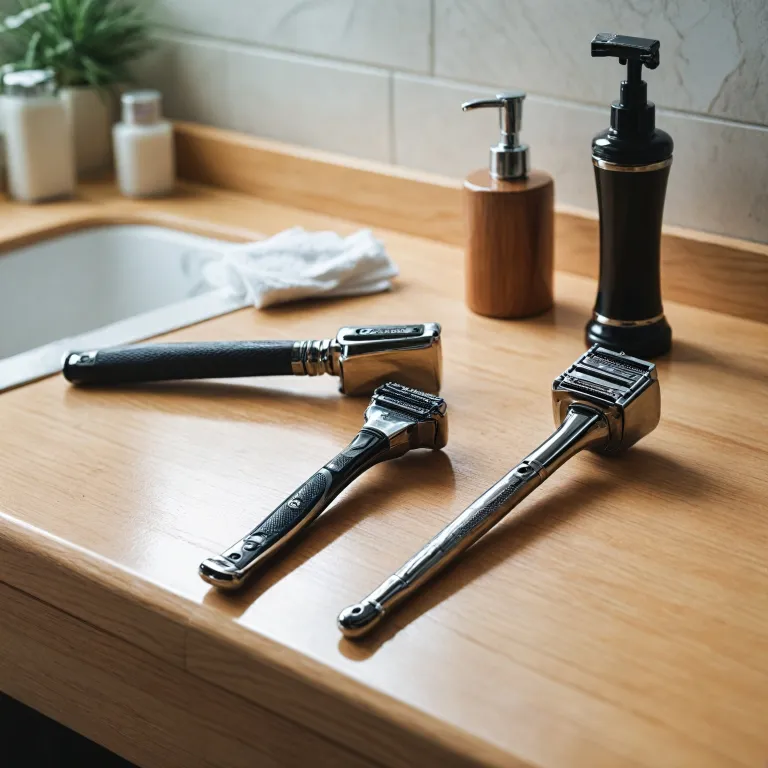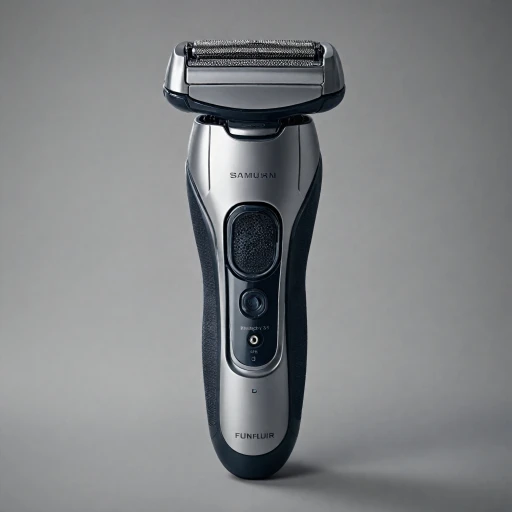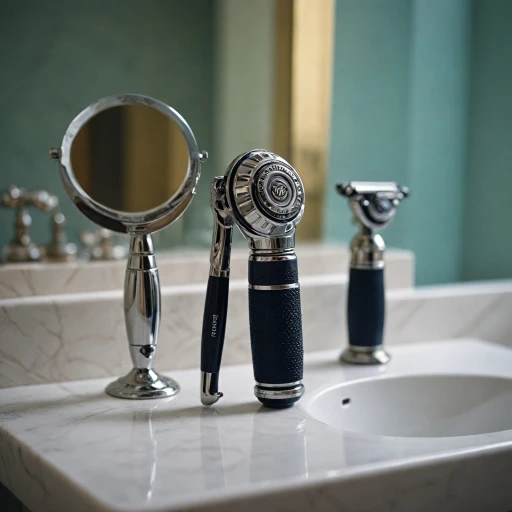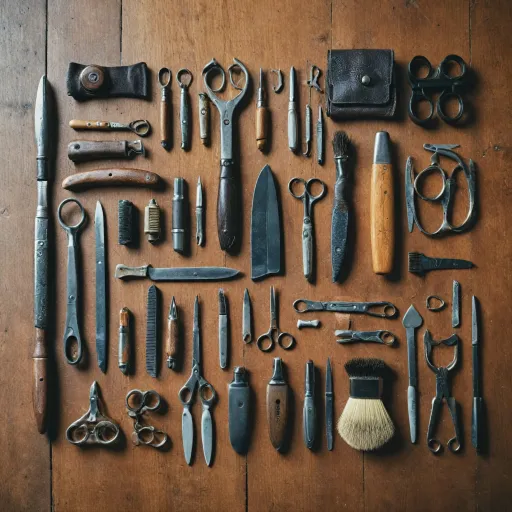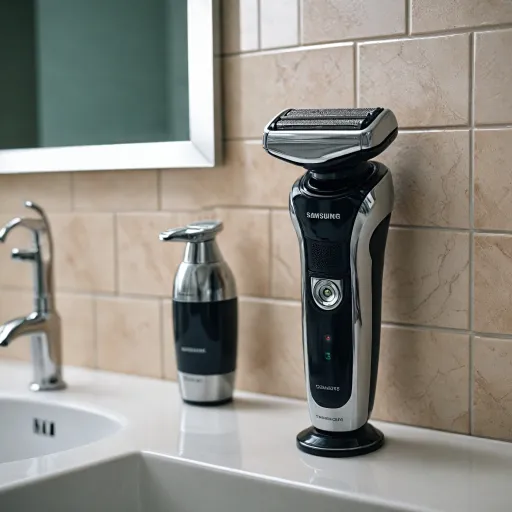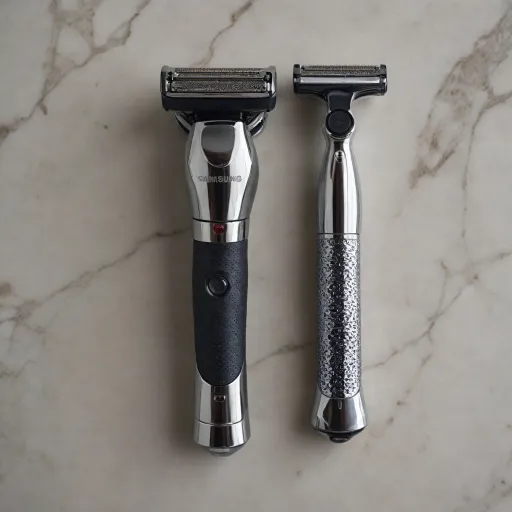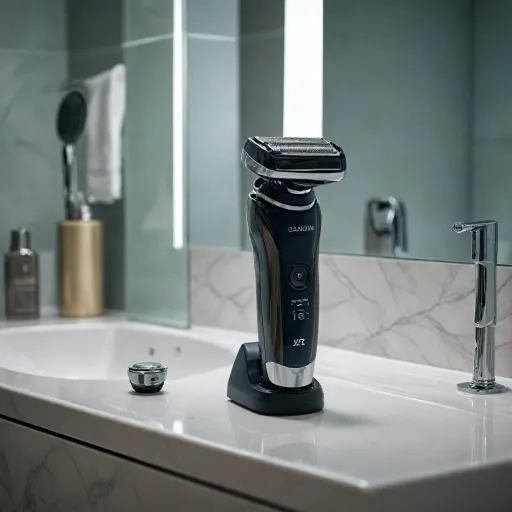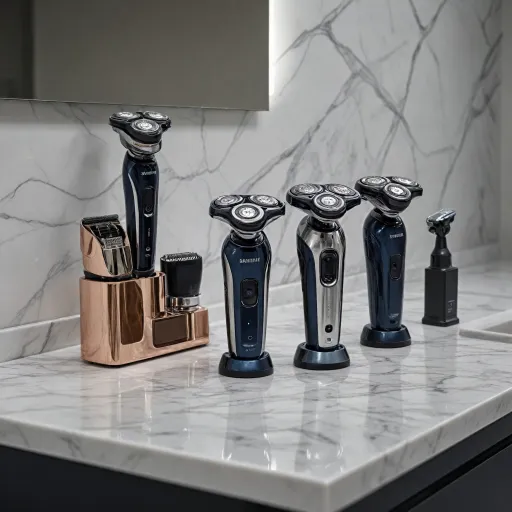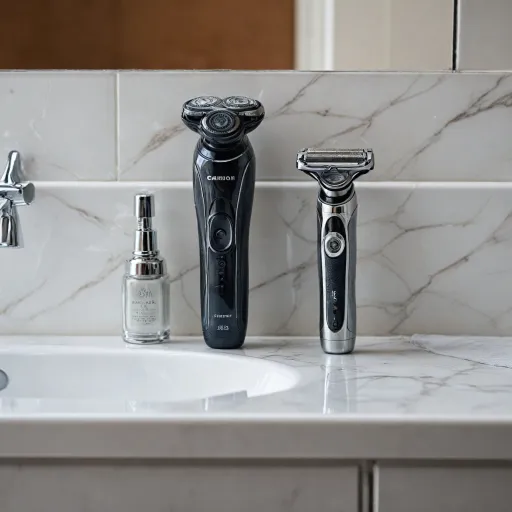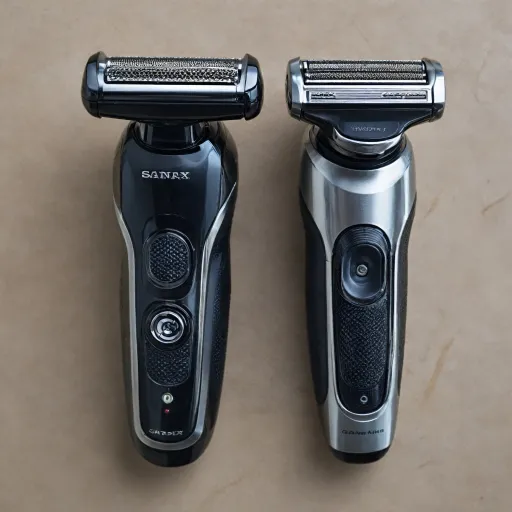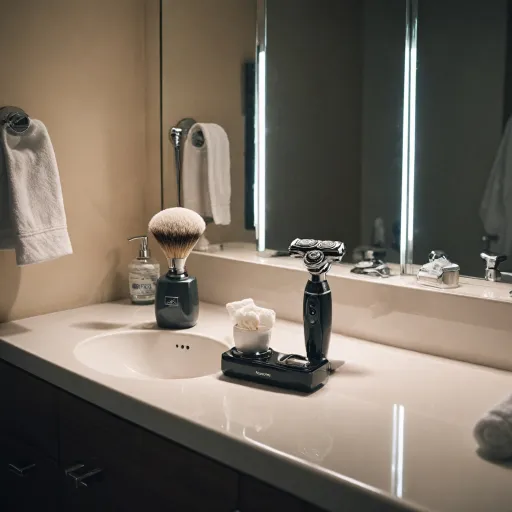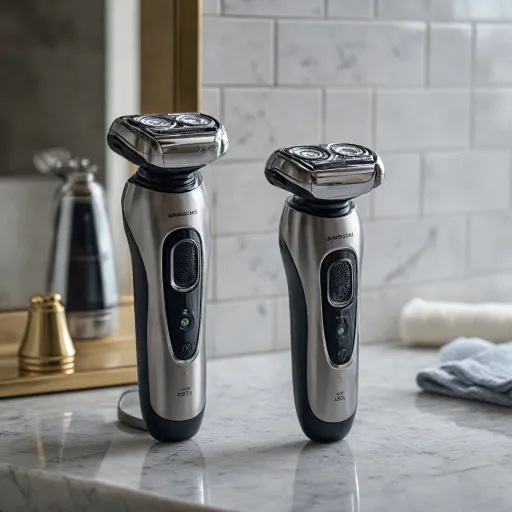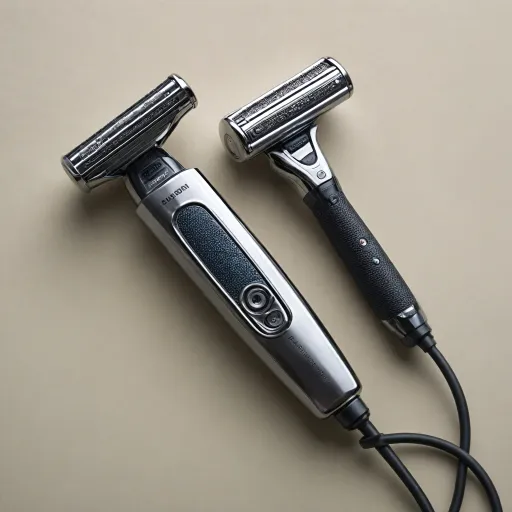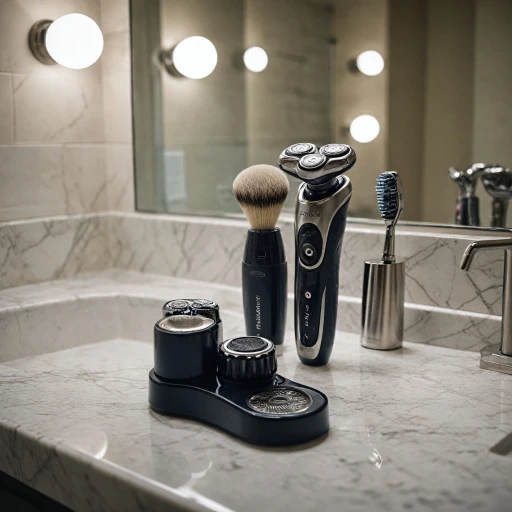
Understanding Single Blade Razors
The Basics of Single Blade Razors
When it comes to traditional shaving, single blade razors stand out as a classic choice, synonymous with precision and craftsmanship. These razors, distinguished by their straightforward design, feature just one blade, offering a unique shaving experience. From straight razors to safety razors, they have been a staple for many who seek a closer shave.
Single blade razors are often preferred for their ability to cut through hair with less irritation, making them an excellent option for those prone to razor burn or sensitive skin. They excel in offering control and accuracy, essential for reducing ingrown hairs and razor bumps.
The higher quality craftsmanship of single blade razors ensures a longer lifespan, which can be more cost-effective and environmentally friendly compared to disposable and cartridge razors. Since these razors only use one blade, the risk of irritation is minimized, providing a smoother, cleaner cut without the tugging and pulling sometimes associated with multiple blades.
Identifying the right razor for your shaving needs involves understanding the specific benefits of each type. Those seeking a closer, personalized shaving experience may find single blade razors to be the superior choice over razors with multiple blades.
Advantages of Single Blade Razors
The Advantages of Opting for a Single Blade Shaver
Single blade razors, also known as straight razors or safety razors, have garnered a loyal following among shaving enthusiasts for various compelling reasons. Although multi-blade razors have become mainstream, single blade options offer distinct benefits that cater to specific shaving needs.
- Closer Shave: One of the most lauded advantages of single blade razors is their ability to provide a close shave. The absence of multiple blades means there's less dragging across the skin, allowing the blade to directly interact with hair. This results in a more precise cut with fewer strokes.
- Reduced Razor Burn: Shaving with multiple blades can increase the risk of razor burn and ingrown hairs, particularly for those with sensitive skin. A single, efficient blade minimizes irritation because it reduces friction and pulling, offering a gentler experience.
- Cost-Effectiveness: Unlike disposable or cartridge razors, purchasing a quality blade razor can be more economical over time. Replacement blades for safety razors are generally cheaper and more durable, offering long-term savings.
- Environmental Considerations: With growing awareness around sustainable living, single blade razors are often praised for being environmentally friendly. They generate less waste compared to razors multi or disposable options, as they involve fewer plastic components and packaging.
Ultimately, making the switch to a single blade can offer men a better quality shave that is both efficient and comfortable. Those intrigued by the distinctive advantages of single blade shaving can delve further into the specifics by exploring what you need to know before choosing between a foil shaver and a razor.
Challenges with Single Blade Razors
Challenges Faced with Single-Blade Razors
While the allure of a single blade razor lies in its promise of a closer shave and less irritation, it's not without its challenges. One of the main issues users encounter is the learning curve associated with mastery. Unlike multi-blade options, which often compensate for imperfect technique, a single blade demands precision. This skill can be particularly daunting for those accustomed to disposable or cartridge razors.
Safety is another concern when using straight or safety razors. The absence of multiple blades means there's less forgiveness if not angled or handled correctly, potentially leading to nicks or cuts. This challenge is compounded by the fact that quality single blade razors require a bit more investment, both in terms of cost and time, as they often need regular sharpening or replacement.
Ingrown hairs are a common problem among many shavers, and while single blades typically cause fewer instances of razor bumps, they are not immune. Sensitive skin might still react unfavorably if the proper shaving techniques are not employed. The singular focus on a single sharp edge can sometimes lead to a paradoxically less forgiving experience in terms of skin irritation.
Additionally, upkeep and maintenance of a single blade razor means regular cleaning and blade replacement. In contrast, a cartridge or multi-blade razor set up allows for quick disposal and replacement of blades. For many users, this convenience of disposability, coupled with the perception of safety and ease, makes multi-blade razors more attractive.
Despite these challenges, choosing the right tool for your personal grooming needs involves balancing these pros and cons. Understanding the nuances of single versus multiple blades is essential for making an informed decision that best suits your shaving routine.
Comparing Single Blade to Multi-Blade Razors
Exploring the Differences: Single vs. Multi-Blade Razors
Understanding the nuances between single blade razors and their multi-blade counterparts can help you achieve a closer shave tailored to your needs. Both options have their champions and detractors, but it largely depends on personal preferences and the specific requirements of your skin and hair type.
Single Blade Experience
Single blade razors, like straight razors or safety razors, focus on precision. These often provide a closer shave with fewer strokes, reducing the chance of irritation. Because the single blade cuts hair at the skin level, it minimizes the risk of ingrown hairs and razor bumps, making it a preferred choice for those with sensitive skin.
Multi-Blade Dynamics
In contrast, multi-blade razors, whether cartridge razors or disposable ones, work on the principle of lifting hair before cutting it, employing multiple blades to snag and cut hairs swiftly. While this can offer convenience and speed, it's important to consider how these multiple blades may sometimes cause irritation or razor burn due to excessive friction against the skin.
Which Offers the Better Shave?
With single blade razors, you often gain more control over the shaving experience. It's said that fewer blades equals less irritation, allowing for a safer shave experience for those prone to skin issues. On the flip side, multi-blade razors offer ease and quickness, a boon for men who are constantly on the go. The trade-off, however, could be a heightened chance of ingrown hairs and compromised skin quality after shaving.
Ultimately, choosing between these two comes down to weighing the convenience factor against the tailor-made precision you might achieve with blade razors. Understanding these differences can guide you towards the right razor choice that aligns best with your shaving routine and skin condition.
Electric Shavers vs. Traditional Razors
Exploring the Shift to Electric Shavers
When it comes to choosing between electric shavers and traditional razors such as single blade, straight razors, or safety razors, the debate is endless. However, the convenience offered by electric shavers cannot be overlooked, especially for individuals with busy lifestyles who seek a quick yet effective shave. Electric shavers provide several benefits that traditional razors might not. For starters, they're generally safer and could potentially reduce the risk of cuts and nicks since there's no direct contact with the skin between multiple blades. This feature is particularly beneficial for sensitive skin types prone to irritation and razor burn. Moreover, those dealing with issues like razor bumps or ingrown hairs may find electric shavers less aggravating. Unlike cartridge razors or other multiple blade razors, an electric shaver lifts and cuts hair without pulling it, potentially reducing the occurrence of these often painful conditions. In terms of shaving quality, although traditional blade razors, especially single blade options, are renowned for providing a closer shave, advancements in electric shaver technology are rapidly closing this gap. Many modern electric models now offer dual or even triple blade systems that can deliver a close shave that rivals traditional methods. On the downside, for individuals who prefer or require a super close shave similar to what a professional barber can provide with a straight razor, electric shavers might occasionally fall short. It may take some trial and error to find an electric razor that meets your specific needs. Navigating between electric and traditional options involves personal preference and specific skin or hair needs. Whether prioritizing safety, convenience, or the ultimate close shave, understanding your requirements will help guide your choice.Choosing the Right Razor for You
Finding Your Ideal Razor Option
Selecting the right razor is essential for achieving a satisfying shaving experience. While single blade razors offer the benefit of less irritation and a closer shave, thanks to their precision and reduced blade friction, they do require more skill and experience. These types of razors, such as straight or safety razors, are ideal for men who have sensitive skin or are prone to razor burns and ingrown hairs.
On the other hand, multi-blade options like cartridge razors offer convenience and speed. With multiple blades working together, they can potentially provide a faster shave, though they may sometimes increase the risk of ingrown hairs and irritation. These blades might be better for those who prioritize quickness and ease over precision.
Electric shavers bring another spectrum into the mix. These devices are a different beast altogether, known for their convenience and speed, making them a popular choice for modern lifestyles. While they may not always offer the incredibly close shave of a single blade razor, they compensate with an ability to handle different hair lengths and provide a safer shave with less risk of nicks and cuts. Exploring options between electric and traditional razors is worthwhile if you're looking for the best fit for your needs.
- Blade Count: More blades don't always mean better quality. Single blades often lead to less irritation.
- Skin Sensitivity: Think about how sensitive your skin is. Sensitive skin may benefit from a single blade's gentle touch.
- Shaving Technique: Consider how familiar you are with different shaving techniques. Single and straight razors might require more practice.
- Time and Convenience: Assess how much time you have for shaving. Electric shavers provide quick, hassle-free options, while single blade variants need time and patience.
- Cost: Take into account budget concerns. While disposable and cartridge razors may seem economical, investing in a quality single blade or electric shaver may save money long term.
Ultimately, choosing between single, multiple blade, or electric options comes down to personal preference and lifestyle needs. Exploring all avenues helps in understanding which matches your desired shaving quality and ease of use.
